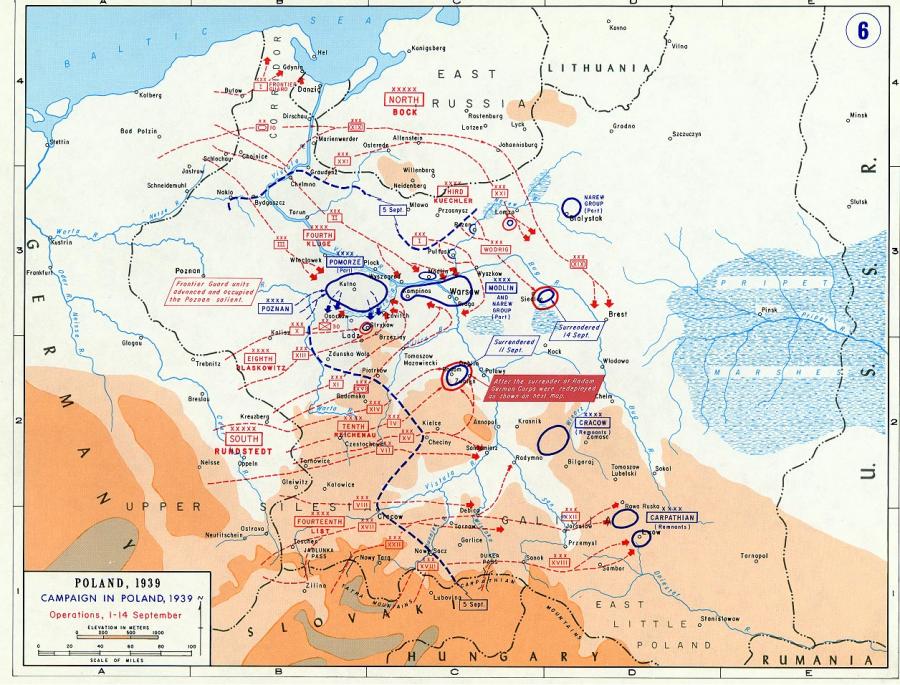Poland: 1939 - The German Invasion's First Two Weeks
Historically, Poland by topographical curse, served as either a battlefield or throughway for more geographically blessed neighbors fighting for supremacy in Europe. At any given time in history the French, Germans, Russians, Austrians, Swedes, etc… violated Poland's sovereignty. A closer look at Poland explains why.
Poland's primary geographical features are the flat plains stretching across the country. In addition, few natural defensible barriers guarded 1939 Poland's 1,750-mile length borders. Poland's only mountain ranges rose in the southeast, the Tatra-Carpathian Mountains. Although this mountain range reached imposing heights, nearly 9,000 feet in places; wide passes with well-developed road and rail infrastructure cut through providing easy passage. In the east, a series of rivers and the Pripet Marshes provided only marginal defensible positions; the rivers flowed shallow and slow. Even though these rivers could flood and widen, in 1939 a long dry summer had left water levels low and thus made the rivers far easier to ford than usual. In the west and north, Germany crowded the Polish borders behind wide, flat plains; perfect terrain for deploying Germany's mechanized and motorized units.
In spite of Poland's poor geographic position, Poland had several strengths. By 1939, Poland ranked among the largest, and potentially most powerful, nations in Central Europe. Poland possessed a population comparable to France. Poland's army in August 1939 included 30 infantry divisions, 11 cavalry brigades - part of the centuries old Polish tradition of mounted excellence on the battlefield, and 2 armored brigades in a mobilized army over one million men strong. Moreover, this same army had combat tested senior officers; officers that had most prominently bested Bolshevik armies possessing overwhelming numerical superiority over the Polish army. Nevertheless that was a different era and technology had advanced prodigiously since that time nearly twenty year prior to the eve of Germany's invasion. Poland did not keep pace, just as other far more geographically blessed nations failed to modernize their military establishments- including the U.S. Army as the most prominent
example in 1939. Poland fielded dated equipment, and relied on poor doctrines; to the point, mounted cavalry still maintained an important role in her 1939 army. Bravery quickly proved no match for a more modern German war machine that hardly ranked larger than the Polish army, with Germany fielding only 39 infantry divisions, 6 Panzer divisions, 4 light divisions, 3 mountain divisions, and 1 cavalry brigade against Poland. Contrary to conventional wisdom, Germany would not steamroll Poland with mass, nor would Poland's military roll over and die. Poland's fundamental lack of strategic long term planning however sowed the seeds for Polish defeat. Meanwhile, Poland's German foe knew exactly what it wanted from Poland.
Map Courtesy of: Department of History, United States Military Academy


